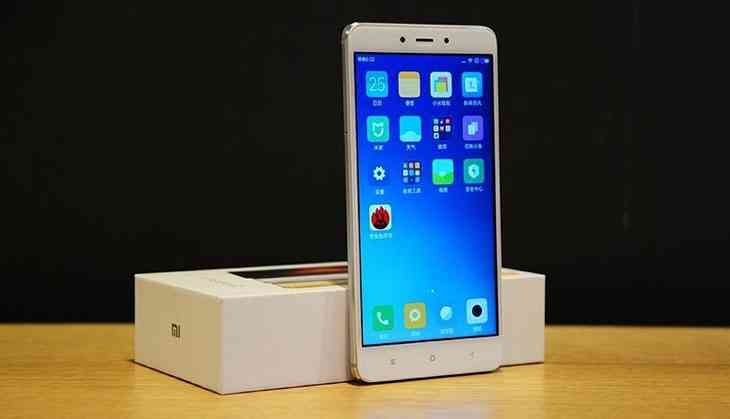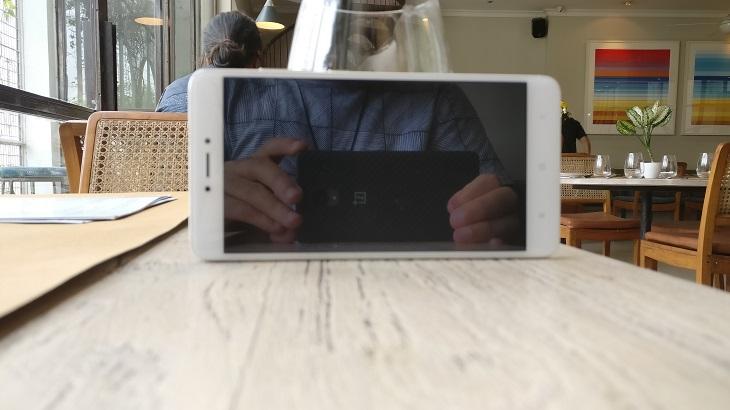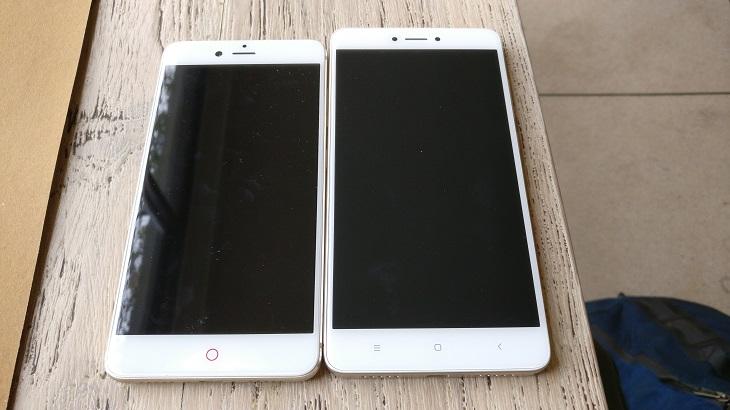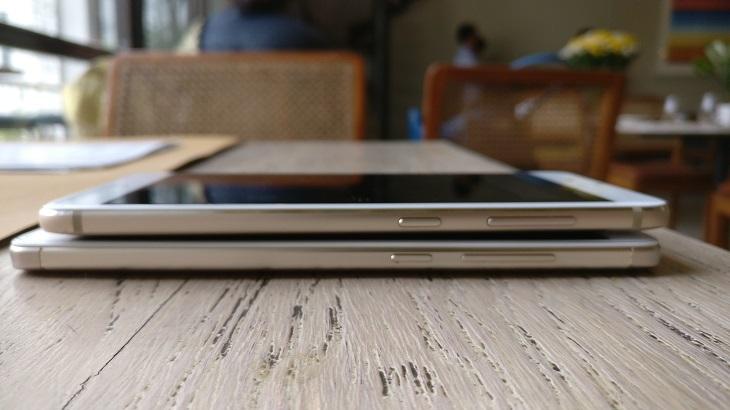Xiaomi Redmi Note 4 review: Budget beast of a smartphone lacking any USP

Xiaomi's Redmi Note 3 was the company's best-selling smartphone in the country with over 3.6 million units sold in 2016. Now, the company is back with its latest and greatest - Redmi Note 4.
The phone brings with it a good design, good performance, long lasting battery and more for a mere Rs 12,999 for the top-end model (4GB RAM & 64GB of space). Like all manufacturers before, Xiaomi, moving to an all-metal chassis with the Redmi Note 4, hopes to emulate its success of last year and continue its climb up the smartphone market share ladder in India.
Xiaomi's motto with their smartphones has been solid performance coupled with low price tags. Will the Redmi Note 4 be a success or will it fall prey to the plethora of budget phones launched in recent months by the competition? Read on to find out.
Design
Xiaomi hasn't done much tinkering with the phone vis-a-vis last year's model but the subtle changes make for a phone that is good to hold. The design on the front is basically the same with capacitive buttons below the screen that light up when you use them. There's a 2.5D curved-edge glass across the front.
The device fits into one's palm very well and one-handed ease of use is present on this phone. At the back of the phone, there are antenna lines at the top and the bottom that give the design a break. The fingerprint scanner resides just under the camera at the back. At the bottom, there is a single speaker broken up into two sets of grilles.
The phone, at just 8.3mm, is slimmer than its predecessor, but somehow just that little bit heavier. While holding the phone you'll notice that it grips better than the predecessor and hence the weight doesn't matter. It's an evolutionary design rather than a revolutionary one and that makes it strictly fine.

Features you ask?
It's got a Snapdragon 625 octa-core 2.0 GHz processor, 64GB of storage that is expandable up to 128GB, 4GB of RAM, a 13MP rear-facing camera, with a 5MP front-facing camera and 4,100 mAh battery.
The phone comes with MIUI 8 based on Android Marshmallow (when will you get Nougat, dear Redmi?), and has support for dual-SIM. It comes in three colours, black, gold and dark grey. Most importantly, it still has a 3.5mm headphone jack.
Finally, the phone is fitted with a 5.5-inch Full HD IPS LCD display and a fingerprint scanner on the back that, again, is average. It performs but occasionally needs a second try or to be held for longer.
Display
The 5.5-inch display comes with a pixel density of 401pp and has good viewing angles. Bring it out under the sun and you come to see its limitations in just how much you can do with the phone without having to squint a little. It may be brighter than its predecessor but that didn't matter much to me in the harsh outdoor Delhi sun.
What impressed me was the colour accuracy on the phone. The images, and especially the text on the screen, was sharper than the competition. There is even a 'Reading Mode' that makes reading easier by adding a blue filter.

Performance
The Redmi Note 4 could just about handle everything I threw at it, barring some gaming. FIFA Mobile crashed a few more times than I would have liked. It multitasks like a boss when switching between Chrome tabs and social media apps like Facebook and Twitter. This may be because I was on the top variant - 4GB of RAM - but still. One should always buy the top variant, unless the price difference is huge.
Media playback on the phone is quite good, mostly thanks to its excellent display in this price bracket. It even has support for 4k videos, but anyone buying this phone won't care much about those.
The speaker at the bottom is loud and can be used while having a small gathering but put it on its loudest volume and you will notice some distortion. Audio quality through Xiaomi's own in-ear earphones was surprisingly pretty good.
The battery life on this phone is excellent. Though it didn't beat the Lenovo K6 Power (LINK) that I tried out about a month ago, it still comfortably got me over one day.
It's a shame Xiaomi didn't include Quick Charge but for the price, one really can't complain. Though looking at that battery capacity, one really wishes they'd squeeze that feature in.
Hardware
The hardware is what really irked me while using this phone. Phones in 2017 are still being launched with a microUSB port and not the new standard Type-C port agreed upon by phone companies. Along with this, the Redmi Note 4 gives NFC a miss, just like its predecessor.
The fingerprint scanner at the back also was a hit or miss. At times, I'd have to press it harder than usual to get the phone to unlock. At other times, I had to remove my finger and then put it back on the fingerprint. Maybe if they would have had the fingerprint scanner at the front, it would have been better.
The biggest issue crops up if your finger is slightly wet. Then the detection goes for a toss.
Camera
Xiaomi focused on improving the camera on the Redmi Note 4 and it has done just that with its 13MP rear camera with a f/2.0 lens. In well-lit outdoor conditions, this phone takes pretty good photos, even when shooting close-ups.
The detail in the photo is definitely there and the colour reproduction gets a thumbs up from me. Sharpness is okay at best and the camera focuses quickly.
The problems comes when shooting in HDR mode. The camera takes a bit too long to process the photo and thus, shooting multiple HDR photos, is a no go. Also, the low-lit photos were a disappointment. Zoom in on low-lit photos and you'll realise just how much detail is missing from the photo.
The front-facing camera is average, especially if the conditions aren't ideal for a photo. While taking a video, the sound recorder becomes a little fuzzy and hard to hear.
The positive here is the camera app that includes a fully functional manual mode allowing for the tweaking of the ISO, white balance and much more.
Software
Xiaomi's Redmi Note 4 comes with MIUI 8 built on Android Marshmallow. Another disappointment for fans of Android-based smartphones is phones launching on an older software - Marshmallow - versus the latest software – Nougat.
MIUI is a popular Android customisation simply because of the sheer number of Xiaomi phones sold in the market. Personally, MIUI is a frustrating customisation to use.First, let me get the positives out of the way. Dual Apps, allowing you to create two versions of one app and Second Space feature, allowing for separate personal and business information on the same device, are a bonus and work swimmingly well.
First, let me get the positives out of the way. Dual Apps, allowing you to create two versions of one app and Second Space feature, allowing for separate personal and business information on the same device, are a bonus and work swimmingly well.Its message notification feature that splits important 'account' related messages and other messages works decently but at times there are glaring omissions. Then, the memory management feature is way too aggressive. Just scrolling and swiping is kind of a pain on the Redmi Note 4 and those icons don't look like they have gotten a modern upgrade as of yet.
Its message notification feature that splits important 'account' related messages and other messages works decently but at times there are glaring omissions. Then, the memory management feature is way too aggressive. Just scrolling and swiping is kind of a pain on the Redmi Note 4 and those icons don't look like they have gotten a modern upgrade as of yet.

Verdict
No matter what, the Redmi Note 4 will sell exceedingly well in the Indian market. It's got the specifications to boot and just about each of them performs average. Nothing performs above average, as in there is no one outstanding feature to put as the USP of the phone.
One can get better battery life with the Lenovo K6 Power at just Rs 9,999. One can get a far better camera experience with the Moto G5 Plus, although that is more expensive. One can get a better phone to hold with Huawei's Honor 6X at Rs 12,999. There is also the recently launched Moto G5, that comes in at Rs 11,999 and feels better in one's palm.
If you have the Redmi Note 3, then there isn't enough to warrant an upgrade. If you want a solid phone that is strictly average in all departments and one that is bound to be a good performer for at least the next twelve months, then get the Redmi Note 4. My only advice is to get the highest variant model and not skimp by getting the lower end version.
Xiaomi is one of those brands that launch phones at various different price points. Each and every phone launched by the company performs just as expected. Very few Xiaomi users come out disappointed and Redmi Note 4 will garner just enough new fans to make this smartphone a success.
Nonetheless, if you're in the market for a smartphone and want a solid all-around phone, then the Xiaomi Redmi Note 4 is for you.
First published: 1 May 2017, 22:00 IST

